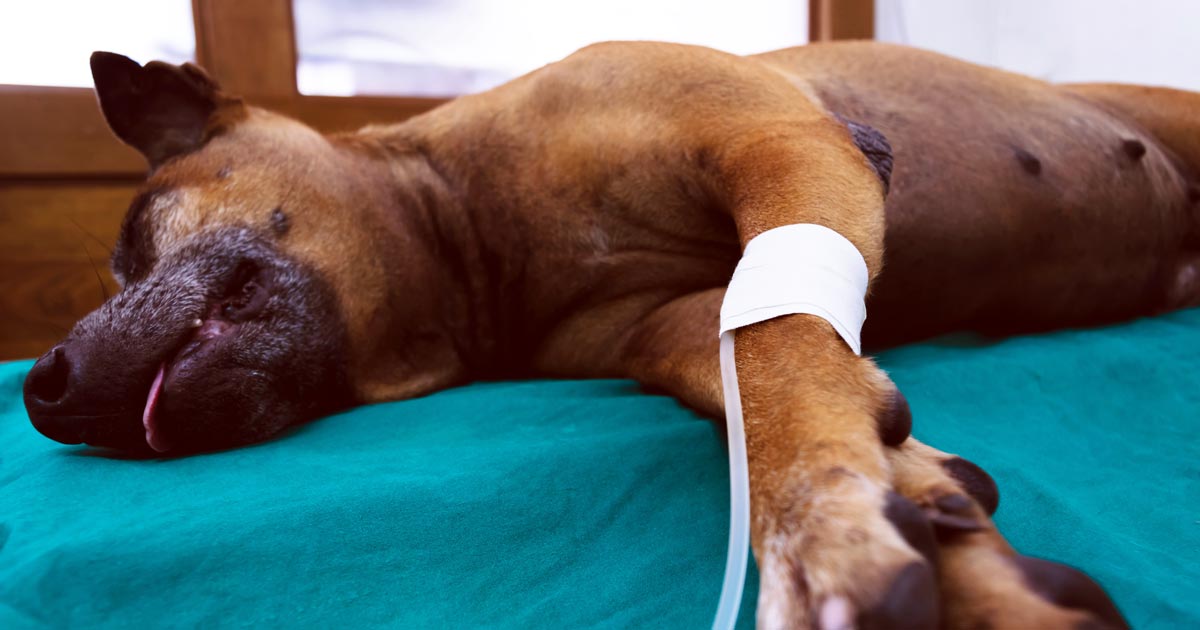In the third and final part of this series, we look at managing seizures in pets, both in an emergency setting and in the longer term.
When presented with a patient in status epilepticus, appropriate emergency treatment begins with:
- Providing oxygen therapy.
- Placing an IV catheter, if possible.
- Administering diazepam as an 0.5mg/kg to 1mg/kg IV bolus, rectally at 2mg/kg or intranasally at 0.5mg/kg.
- Intubating, if required to maintain a patent airway.
- Cooling, if hyperthermic.
- Giving mannitol at 0.5mg/kg to 1mg/kg slowly IV if seizure activity lasts more than 15 minutes or there is any reason to suspect cerebral oedema.
- Collecting full bloods – test glucose, electrolyte and calcium levels first.
- If on phenobarbital, collecting a sample for baseline testing.
It is important to remember patients may continue to paddle slowly after seizure activity has finished, but if the eyelids are twitching, they are still seizing.
If the seizures are controlled by these first steps, give a 4mg/kg dose of phenobarbital and commence supportive therapy with IV fluids, including correction of any electrolyte and metabolic derangements.
If at first…
If these first emergency steps fail to get the seizures under control, the following steps can be attempted:
- Diazepam 0.5mg/kg to 1mg/kg IV bolus – can be repeated every five minutes for up to three doses.
- Propofol 2mg/kg to 4mg/kg IV titrated to effect to stop motor activity.
- Phenobarbital slow IV 4mg/kg if already on maintenance therapy, mg/kg to 8mg/kg if not – can be repeated at 20 to 30 minute intervals.
- +/- Diazepam (or midazolam) continuous rate infusion (CRI) at 0.5mg/kg/hr.
- Propofol CRI following titrated dose, at 0.2mg/kg to 0.5mg/kg/min – continue for six hours then wean down slowly over next six hours.
- Levetiracetam at 20mg/kg to 60mg/kg IV titrated can be used instead of propofol (this is safer if hepatic disease is present).
Ongoing treatment
The recommendations for when to start long-term treatment are summarised as follows:
- Structural lesion present or prior history of brain disease or injury.
- Acute repetitive seizures or status epilepticus (ictal event ≥5 minutes or ≥3 or more generalised seizures within a 24-hour period).
- ≥2 or more seizure events within a six-month period.
- Prolonged severe, or unusual postictal periods.
Chronic therapy in patients with ongoing seizures aims to reduce the frequency to an acceptable and manageable level. The drug used to achieve this is often down to clinician preference; one or a combination of the following can be used:
- Phenobarbital – solo and combination therapy, drug monitoring is required along with regular monitoring of liver enzymes and function is particularly important.
- Potassium bromide (not cats) – combination therapy, drug monitoring is required and can cause pancreatitis.
- Imepitoin – solo or combination therapy, does not require drug monitoring.
- Levetiracetam – solo or combination therapy, does not require drug monitoring.
Regular testing of blood levels of anti-epileptics is important, although it does not indicate whether the drug should be working or not, it does help provide additional information when investigating when control is inadequate and to prevent toxic side effects.

Leave a Reply